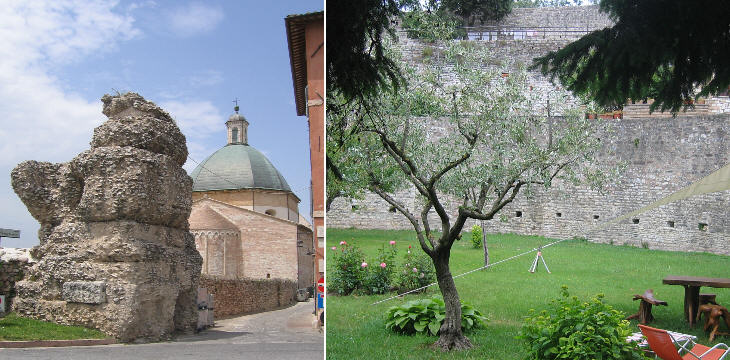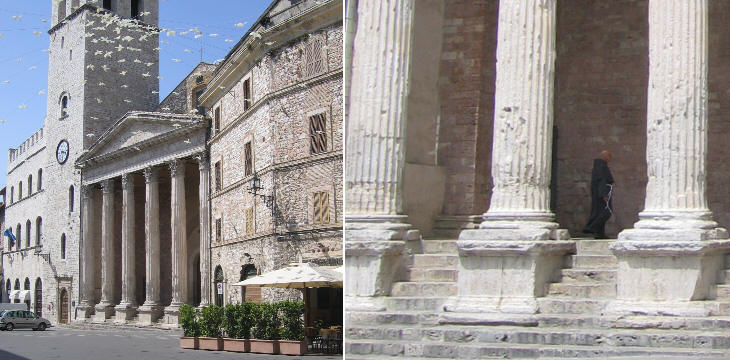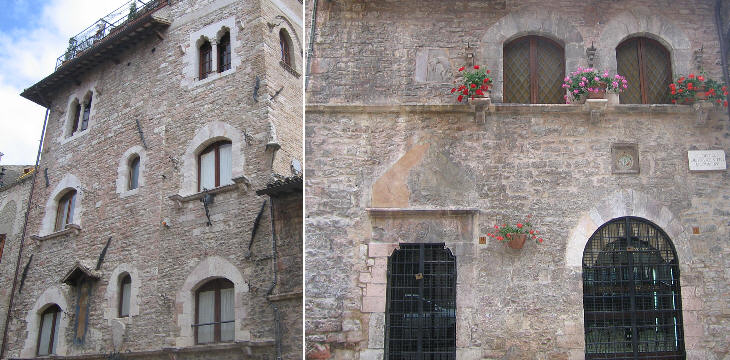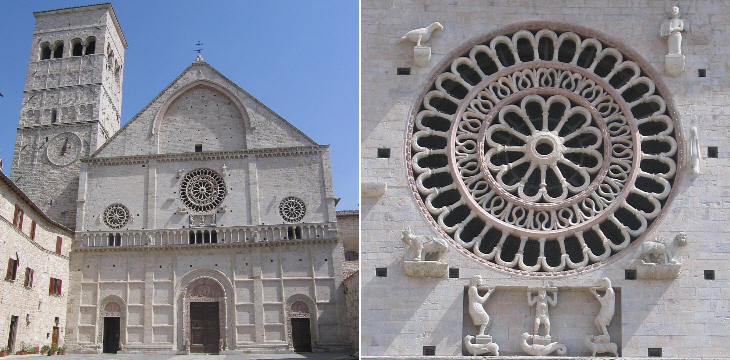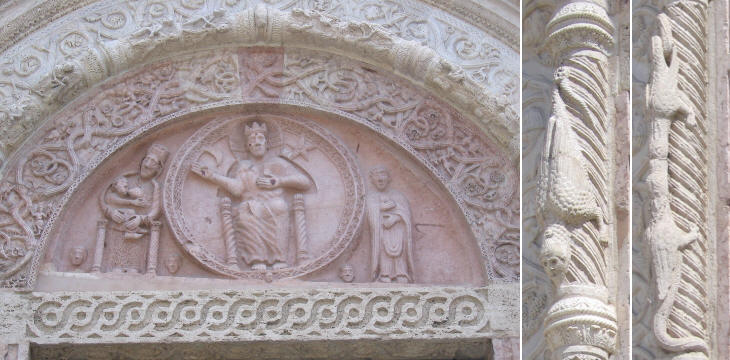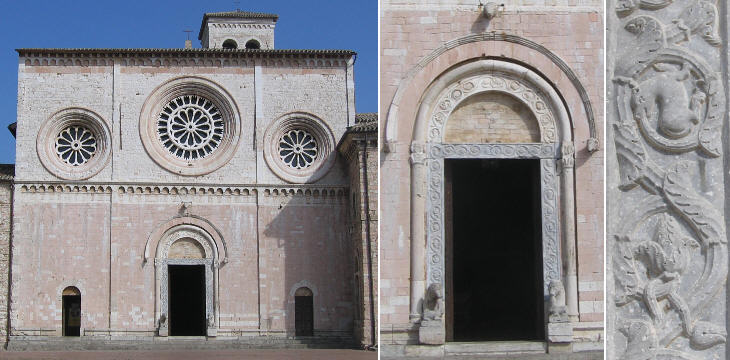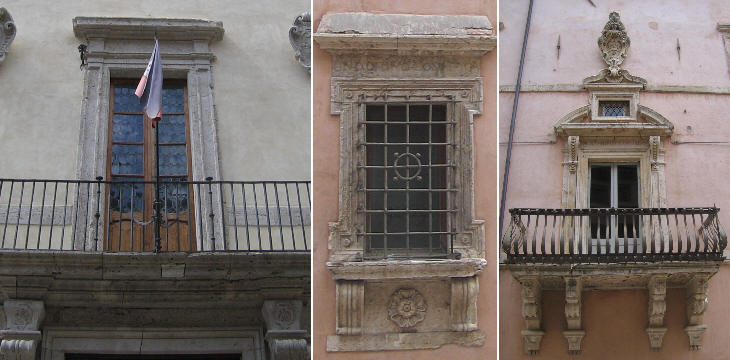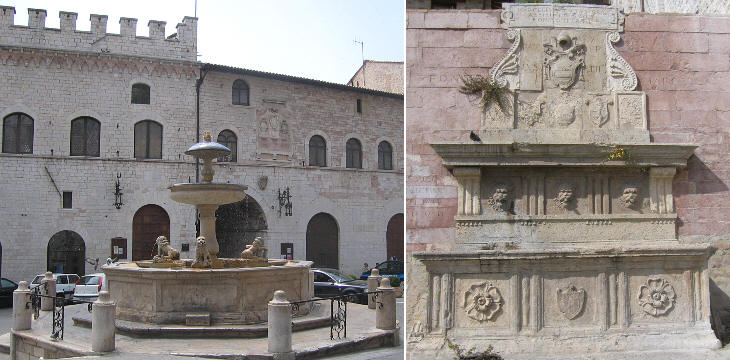  What's New! Detailed Sitemap All images © by Roberto Piperno, owner of the domain. Write to romapip@quipo.it. Text edited by Rosamie Moore. Page added in June 2007. |
Everyday a train leaves Termini at 8:14; first stop: Orte; second stop Narni; third stop Terni; fourth stop Spoleto; fifth stop Trevi; sixth stop Foligno; seventh stop Spello; eighth stop ... 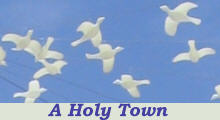 Assisi - part two: the development of the town Assisi - part two: the development of the town
Assisi, like many other towns of the Umbrian Valley, flourished during the Roman Empire.
Roman Assisi was important enough to have an amphitheatre (for fights with beasts and maybe between gladiators) and an odeon (for theatrical performances); its wealthiest inhabitants built large funerary monuments along the road leading to Rome.
XVIIIth century travellers did not come to Assisi to see its churches and its frescoes; they came to see the remaining faēade of a temple dedicated to Minerva. For these travellers it was the first ancient temple they saw in their way to Rome. J. W. Goethe wrote in his Italian Journey: "When we got near Madonna degli Angeli, I left my vetturino (cab driver) and let him go on to Foligno. I was longing to take a walk by myself in this silent world, and climbed the road to Assisi on foot with a high wind blowing against me. I turned away in distaste from the enormous substructure of the two churches on my left, which are built one on top of the other like a Babylonian tower, and are the resting place of St Francis. I asked a handsome boy the way to Maria della Minerva, and he accompanied me up into the town, which is built on the side of a hill. At last we arrived in the Old Town and - lo and behold! - there it stood, the first complete classical monument I have seen. A modest temple, just right for a small town, yet so perfect in design that it would be an ornament anywhere. ... I cannot describe the sensations which this work aroused in me, but I know they are going to bear fruit for ever. ... The road to Foligno along the side of the mountain overlooking the valley is beautiful, and my walk, which took fully four hours, was one of the most enchanting I have ever taken."
Assisi retains many interesting medieval buildings, but also many "fake" medieval buildings (mainly late XIXth and early XXth centuries). Occasionally also the restoration of old buildings went a bit too far and added too many "nice to see" details.
The cathedral of Assisi is an imposing building with many points in common with that of Spoleto: in both churches the large central rose was decorated with the symbols of the four Evangelists and was "supported" by small telamones (male figures used as pillars).
The decoration of the three portals is amazing with many details the symbolic meaning of which is difficult to understand. Jesus is portrayed as an emperor and the Virgin Mary as a queen: it is a rather unusual iconography especially for the realistic way in which suckling is shown.
S. Pietro is another large church the inhabitants of Assisi built at the same time as the cathedral: both churches were consecrated in 1253 by Pope Innocent IV.
Assisi, apart from its role as centre of the Franciscan Order, was a minor town of the Papal State and it never really recovered from the 1348 Black Death; only a few Renaissance and Baroque palaces were built along the main street of the town.
Assisi has several historical fountains: the main one is in the central square and is the combination of medieval statues and XVIIIth century design. Fonte Marcella is a simple but elegant fountain named after Marcello Tuto, governor of Assisi, who commissioned it in 1556: the street where it is located is called Via Fontebella which means nice fountain: it is one of the very few monuments bearing the coat of arms of Pope Paul IV.
Background image: detail of the left portal of the cathedral. Move on to page three: St. Francis. 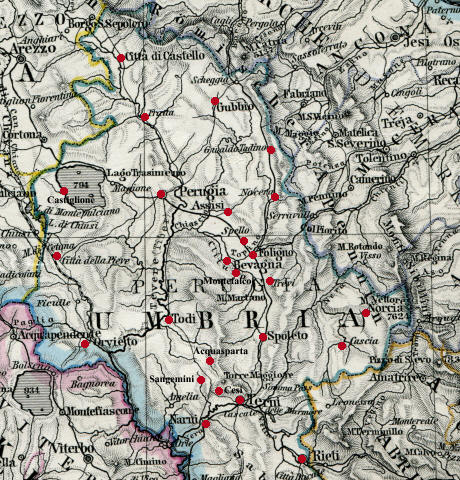
1864 clickable map of Umbria |
